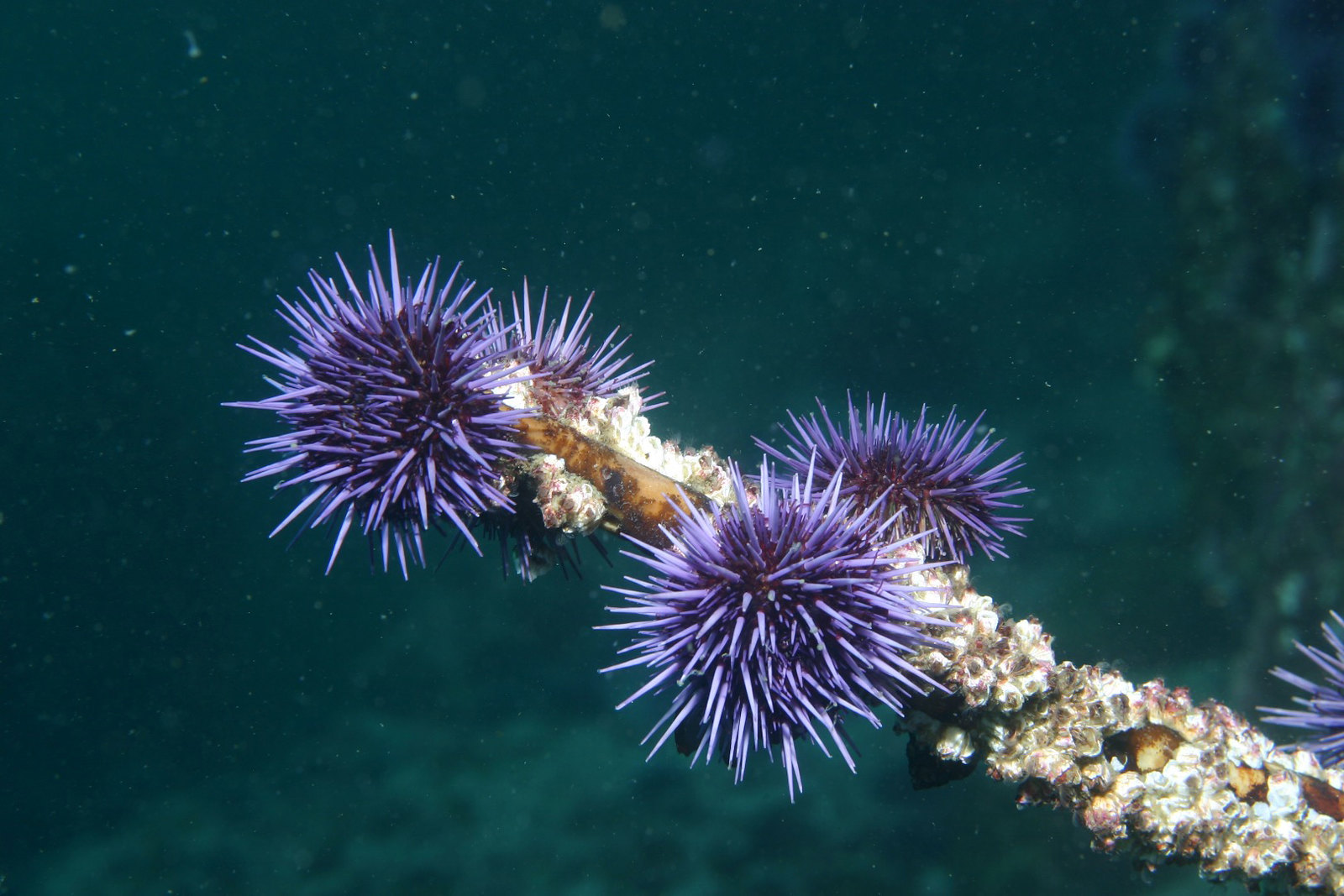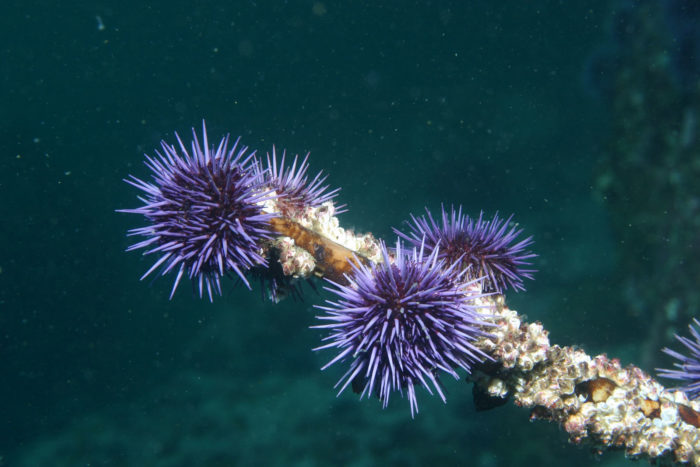
Sea Wonder: Purple Sea Urchin

Photo credit: Steve Lonhart/NOAA
The purple sea urchin (scientific name: Strongylocentrotus purpuratus) lives along the coast of North America in the Pacific Ocean and are quite a unique and beautiful species of marine invertebrate. Admire but don’t touch— those protective spines on their bodies are sharp!
Appearance
We wouldn’t blame you if you compared purple sea urchins to hedgehogs on land. These invertebrates are covered in sharp, purple spines made of calcium carbonate, the same hard, concrete-like material that composes coral reef skeletons and mollusk shells. Under that prickly exterior though, these creatures are real softies. On the underside of their bodies are their mouths, which house five sharp teeth and on the top are their excretory organs used to expel metabolic waste. Their bodies are spherical and covered in a squishy skin to protect its internal organs. Their bodies, in addition to hard spines, also have five pairs of soft tube feet covered in suckers used for movement, predation, and stability. They don’t have brains, eyes, or noses but can respond to changes in light, chemistry, and other environmental factors using sensory molecules all over their bodies.
Adult purple sea urchins are around 3 inches wide and an inch-and-a-half tall on average. As these animals grow from larvae to adults, their spines change from a lighter green color to their characteristic dark purple. To protect themselves from predators and damaging UV rays, purple urchins will decorate their bodies with shells, rocks, and pieces of algae.
Diet and Habitat
Purple sea urchins call the Pacific Ocean, specifically along North America’s west coast, home. They are commonly found in rocky intertidal areas and among kelp forests, of which they are a key part of the delicate ecosystem. They need cooler waters to survive and can be found from Baja California Sur in Mexico all the way up to Alaska, living in waters as deep as 525 feet or about 160 meters.
These animals are omnivores, primarily eating large marine algae like bull kelp and giant kelp, but will rarely eat dead fish, barnacles, and sponges. Their primary predators are sea stars, sea otters, and humans (for both research and food). When sea urchin predator populations suffer, such as when sea stars died off in 2013 due to sea star wasting disease, urchin populations can grow unchecked and contribute to widespread loss of kelp forests. This delicate balance is often taught in marine science and ecology classrooms as a classic example of what are known as keystone species in which protecting certain species leads to the survival of numerous other species in the ecosystem.
Life History
Researchers believe purple sea urchins can live to be as old as 70 years, but more commonly live to be around 20. They begin their lives as tiny eggs—usually fertilized between January and March— that develop outside of their mothers’ bodies and attach to fixed structures like algae and rocks until they hatch several weeks to months later. Purple sea urchins don’t remain in their larval state very long before settling on the ocean floor and undergoing metamorphosis to become more sea urchin-like in appearance. For the next two to five years, the juvenile will grow until it reaches sexual maturity and adulthood. Generally, adult sea urchins will live in large groups.
Sea urchins are commonly studied by biomedical scientists due to their simplicity, the ease of tracking embryonic development, and their potential contributions to medicine. Recently, scientists at Baylor University mapped the entire genome of purple sea urchins, allowing for more detailed studies in molecular, evolutionary, and cell biology.
Threats and Conservation
Purple sea urchins may not be the cute and cuddly animals we are used to seeing in conservation advertising, but protection of these and other invertebrates is essential to the health and future of important ecosystems. Ocean acidification, habitat destruction, coastal development and physical damage from human activities, and warming oceans are all threats to sea urchin populations, which puts at risk the health of kelp forest ecosystems, including sea otter and sea star populations. Due to the size and quick growth of kelp forests, they play an important role in storing carbon that would otherwise contribute to climate change and ocean acidification.
